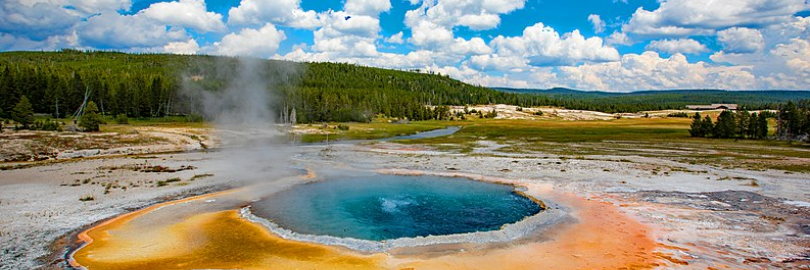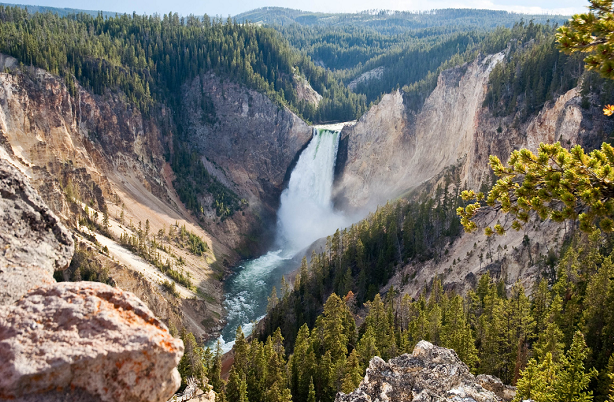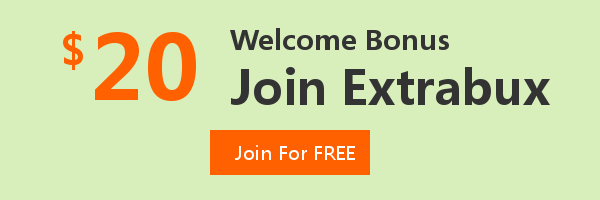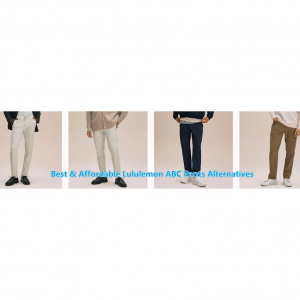
The Ultimate Denver to Yellowstone National Park Road Trip Itinerary in 2025
If you live in Denver and want to venture out to one of the most stunning nature parks in the world or if you're visiting and planning the drive, Yellowstone National Park is a great place to go from Denver. Sites along the route like Medicine Bow National Forest and the Grand Tetons tempt the adventurous to take a few days to make the drive. Before arriving in the land of geysers and colorful tidal basins, travelers experience a Rocky Mountain high and eagle-eyed passengers spot antelope roaming across prairies. Jumpstart this fantastic road trip from Denver to Yellowstone to get a look at some urban charming and natural landscapes. If you're travelling with young children or don't want to spend the whole day in the car, a stop along the way will help break up the long drive. To help you with your planning, here is our complete guide for going on a road trip from Denver to Yellowstone.
Road Trip from Denver to Yellowstone National Park
Best Routes
If you will return to Denver after visiting Yellowstone, I suggest you choose route 1 (route 2) to Yellowstone National Park, and then route 2 (route 1) back to Denver. In this case, the scenery you see back and forth is different. Road trip from Denver to Yellowstone National Park will become more interesting.
| Route 1 | Route 2 | |
| Distance (miles) | 510 | 545 |
| Driving time | 8 hours 30 minutes | 8 hours 45 minutes |
| Best for | Scenery & wilderness | Better roads & stopping points |
| Yellowstone Approach | South Entrance | East Entrance |
Best Stops Along Route 1:
Denver
Dinosaur National Monument
Flaming Gorge
Wyoming’s Fossil Basin
Grand Teton National Park
Yellowstone National Park
Best Stops Along Route 2:
Yellowstone National Park
Wind River
Casper
Rocky Mountain National Park
Denver

Route 1: The faster and more scenic route will take exit 271 for Mountain Vista Drive. After you drive across to Terry Lake you will join U.S. Route 287 which will take you all the way to the Yellowstone National Park South Entrance on US-191. You can take a shortcut along the I-80 from Laramie to Rawlins to speed up your progress. Route 1 has the advantage of driving past the Shoshone National Forest and passing between the Grand Teton National Park and the Bridger-Teton National Forest on the way to Yellowstone. Along with the drive around Jackson Lake, this has got to be one of the most stunning drives in the United States.
Route 2: The alternative is to carry on along the I-25 past Fort Collins and follow it all the way into Casper. From Casper, follow U.S. Route 20 all the way to the Eastern Entrance of the Yellowstone National Park. Your route will follow along U.S. Route 26 and Wyoming Highway 120 before heading into the park.
From a practicality perspective, the major difference between the two routes is the direction from which you enter the park. Depending on your itinerary and place you want to stay/start your trip to Yellowstone from, one might be better than the other.
Best Stop 1: Dinosaur National Monument
Suggested duration: 1-2 hours
Dinosaurs once roamed here. Their fantastic remains are still visible embedded in the rocks. Today, the mountains, desert and untamed rivers flowing in deep canyons, support an array of life. Petroglyphs hint at earlier cultures. Later, homesteaders and outlaws found refuge here. Whether your passion is science, adventure, history or scenery, Dinosaur offers much to explore.

Best Stop 2: Flaming Gorge
Flaming Gorge National Recreation Area presents a vivid lesson in geology at its most dramatic and most varied. This region presents terrific contrasts: the rugged Uinta Mountains nearby; beautiful alpine forests; a brilliantly colored, 91-mile reservoir at the bottom of a dramatic river gorge that runs 1,500 feet deep in places; and high desert country to the north.
Today the area is a favorite for tourists and recreationists, and a relatively undisturbed home for wildlife, including antelope at the aptly named Antelope Flat north of Dutch John. Flaming Gorge National Recreation Area offers visitors two information centers (at Redrock Canyon Overlook and Flaming Gorge Dam), more than 600 camping and picnic sites, and more than 100 miles of trails for hiking and mountain biking.
On the lake, popular activities include angling, boating, water skiing, and swimming — even scuba diving. In the surrounding area, historical attractions such as the Swett Ranch can be see by signing up for a forest service tour. Geology buffs won’t want to miss the Sheep Creek Canyon Geological Area, which can be toured by auto. And don’t forget the Green River below the dam, which offers floating opportunities, hiking trails, and excellent fly fishing. Whatever your chosen form of recreation, you are sure to find plenty to do at Flaming Gorge National Recreation Area.

Booking Hotels?
We highly recommend you to book your hotels at Booking.com, Hotels.com, Orbitz.com, Expedia, Trip.com, Travelocity, Trip.com & TripAdvisor. and don't forget to sign up at Extrabux (What is Extrabux?) , then you can get up to 4% super cashback from Extrabux! Sign-Up Bonus: Free to join it & get $20 welcome bonus!
Best Stop 3: Wyoming’s Fossil Basin
Drive south of Grand Teton National Park, and you will stumble on a wonderfully uncrowded national monument unlike any national park site you’ve visited.
Fossil Butte National Monument is a unique National Park Service gem 15 miles west of the Kemmerer/Diamondville area (pronounced “Kemmer”). Instead of the huge mountain peaks of the parks to its north, you’ll discover a high desert landscape that’s home to incredibly preserved fossils of ancient turtles, birds, snakes and more. In fact, the monument was created in 1972 to protect these ancient animals and plants.
Start in the visitor center for exhibits on more than 300 fossils, including a crocodile, found in the ancient, 48-million- year-old Fossil Lake, which is now dry. Then, head out to the 2.5-mile Historic Quarry Trail where trail-side exhibits provide information about wildlife, plants and geology. Keep in mind it’s forbidden to remove fossils or disturb artifacts in the national monument.
During the summer, go on a guided tour, see fossil preparation demonstrations or tag along with a paleontologist on Fridays and Saturdays.
If you’re interested in discovering fossils on your own, head to one of the area’s private quarries like Ulrich’s Fossil Gallery. At these private facilities, you can uncover fish, plant and bird fossils for a perfect souvenir. There also are fossils for sale in shops in Kemmerer.

Best Stop 4: Grand Teton National Park
Suggested duration: 1-2 hours
Situated near famed Jackson Hole, Grand Teton National Park's crown jewels include the Cathedral Group of peaks and the majestic Snake River. The dramatic spires that inspired Ansel Adams rise straight from valley floors, providing awe-inducing views. See them at their most compelling from the comparatively gentle Jenny Lake and Hermitage Point's trails or the switchbacks of Death Canyon. Jackson Lake is favored for windsurfing and sailing. Colter Bay Visitor Center contains an Indian Arts Museum.

Best Stop 5: Yellowstone National Park
Established in 1872, Yellowstone National Park is a national treasure. Located primarily in Wyoming, the park also extends into Montana and Idaho. Yellowstone has active geothermal features with geysers and boiling mud pots throughout the park. The most famous is Old Faithful, a geyser that has erupted on the clock for decades. Travelers be warned, July is the busiest month of the year, with almost a million visitors alone. The park has a tour bus system, nine visitor centers, and 2,000 campsites.
Top Attractions in Yellowstone National Park
1. Grand Canyon of the Yellowstone

2. Grand Prismatic Spring

3. Old Faithful

4. Lamar Valley

Best Stop 6: Wind River
The Wind Rivers contain more than 40 named peaks over 13,000 feet, including Gannett Peak, Wyoming’s highest at 13,804 feet. Seven of the largest glaciers in the Rocky Mountains are found here, including the single largest glacier in the American Rockies. There are over 1,300 named lakes in the Wind River Range, and the headwaters of the Green River can be found here. The Continental Divide crests the Wind River Range’s entire length.
The Wind River Range encompasses an area of 2.25 million acres. The Winds are the most popular section of the Bridger Wilderness of western Wyoming. This rugged piece of the Rocky Mountains, extending for approximately 80 miles along the western slope of the Continental Divide, contains a unique combination of jagged granite rock, alpine forest, and open alpine meadows. Serving as the headwaters for the mighty Green River, this wilderness holds 7 of the 10 largest glaciers in the Lower 48, more than 2,300 crystalline lakes and ponds, and numerous glacier-carved cirques, kettles, valleys, and hanging troughs.
Hiking & Backpacking
The Wind River Mountains are a popular backpacking area for visitors from around the world. The Continental Divide National Scenic Trail traverses the Winds from South Pass to Union Pass as part of the trail system that extends from Canada to Mexico. The Cirque of the Towers, in the southern portion of the range, is a popular technical rock-climbing destination, as are any number of sheer granite peaks that make up this range.
Trailheads lead to 600 miles of trails to access this seemingly boundless area. With the jagged peaks and the authentic backcountry experience, the Winds are a versatile range for every type of adventurer. If solitude is what you seek, it can be found off any given path. With stunning scenery everywhere you look, and wildlife around every bend, the Winds vanquish other Wyoming mountain ranges in breadth of beauty and true alpine experiences.

Best Stop 7: Casper
In Casper, you can discover the past while taking in picturesque scenery and modern amenities. This town in central Wyoming marks the only point where the Oregon, California, Mormon and Pony Express Trails intersected during the westward expansion of the mid-1800s. Step into the shoes of these western travelers with a wagon ride from Historic Trails West or by visiting Independence Rock. Experience the outdoors with a quick drive to Casper Mountain, where summer hiking and mountain biking give way to winter snowshoeing and skiing at Hogadon Ski Area. Be sure to cast a line on the North Platte River, where uncrowded waters teeming with blue ribbon trout easily make Casper one of the best fishing destinations in the U.S. And don’t leave hungry; the restaurants in Casper are some of the best in the state, including Racca’s Pizzeria Napoletana and Firerock Steakhouse.

Best Stop 8: Rocky Mountain National Park
Rocky Mountain encompasses 415 square miles of spectacular mountain environments that is just a short drive from Denver, Colorado. One of the U.S.'s most visited national parks, Rocky Mountain hosted more than 4.5 million people in 2016 for world-class recreation opportunities from hiking, biking and fishing to horseback riding, camping and mountaineering.
Enjoy Trail Ridge Road – which crests at over 12,000 feet including many overlooks to experience the subalpine and alpine worlds – along with over 300 miles of hiking trails, wildflowers, wildlife, starry nights, and fun times.


Extrabux is an international cashback shopping site, offering up to 30% cashback from 10,000+ Stores!
Booking.com, Ripley's Aquarium, Marriott, Pontins, Trip.com, Ripley's Myrtle Beach, The Brehon, ebookers, Away Resorts, Gleneagle Hotel, Agoda, Extended Stay America, Worldwide Insure, Malmaison, Scotts Hotel, Priceline, Zafiro Hotels UK, TurnKey Vacation Rentals, Discovery Cove, etc.
Join to get $20 welcome bonus now! (How does Welcome Bonus work?)
Recommendation
-

Is Turkish Airlines Good for International Flights?
-

10 Best & Stylish Winter Coats for Women on NET-A-PORTER in 2025
-

Top & Best 12 Sneaker Apps/Websites for Raffles, Releases & Restocks in 2025
-

7 Best Gift Card Exchange Sites - Buy, Sell and Trade Discount Gift Card Safely and Instanly!
-

Top 9 Professional Skincare Brands for Licensed Estheticians 2025










